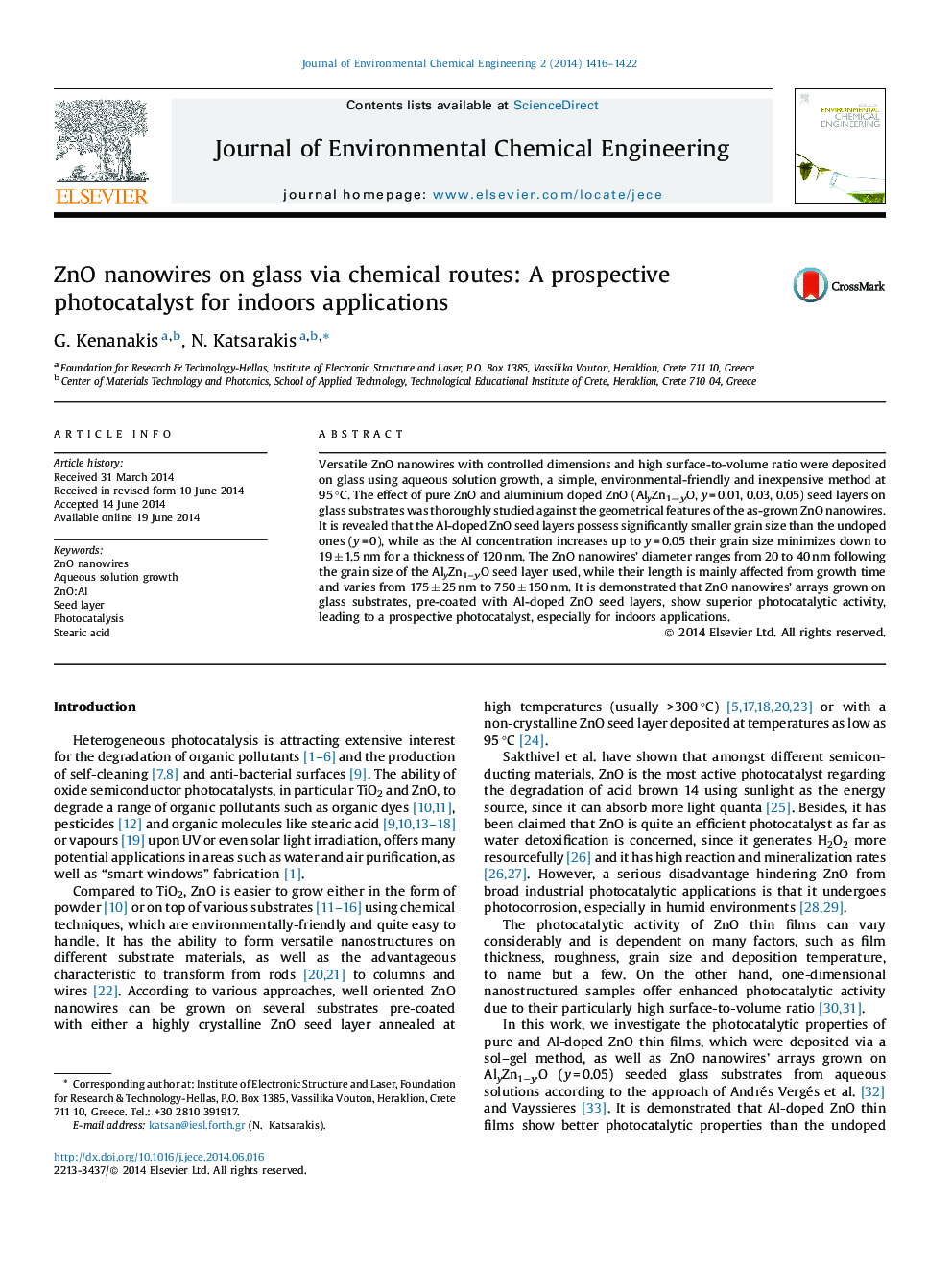| Article ID | Journal | Published Year | Pages | File Type |
|---|---|---|---|---|
| 221976 | Journal of Environmental Chemical Engineering | 2014 | 7 Pages |
•Highly c-axis oriented ZnO nanowires with diameter ranging from 20 to 40 nm were grown at 95 °C.•Al-doped ZnO seed layers deposited on glass were used as substrates.•The photocatalytic degradation of stearic acid was studied upon UV-A irradiation.•ZnO nanowires show superior photocatalytic activity, reaching 95% at 15 min.
Versatile ZnO nanowires with controlled dimensions and high surface-to-volume ratio were deposited on glass using aqueous solution growth, a simple, environmental-friendly and inexpensive method at 95 °C. The effect of pure ZnO and aluminium doped ZnO (AlyZn1−yO, y = 0.01, 0.03, 0.05) seed layers on glass substrates was thoroughly studied against the geometrical features of the as-grown ZnO nanowires. It is revealed that the Al-doped ZnO seed layers possess significantly smaller grain size than the undoped ones (y = 0), while as the Al concentration increases up to y = 0.05 their grain size minimizes down to 19 ± 1.5 nm for a thickness of 120 nm. The ZnO nanowires’ diameter ranges from 20 to 40 nm following the grain size of the AlyZn1−yO seed layer used, while their length is mainly affected from growth time and varies from 175 ± 25 nm to 750 ± 150 nm. It is demonstrated that ZnO nanowires’ arrays grown on glass substrates, pre-coated with Al-doped ZnO seed layers, show superior photocatalytic activity, leading to a prospective photocatalyst, especially for indoors applications.
Graphical abstractFigure optionsDownload full-size imageDownload as PowerPoint slide
